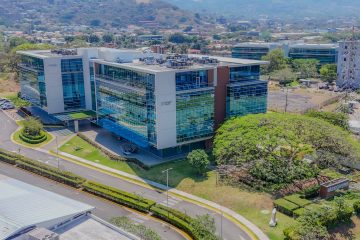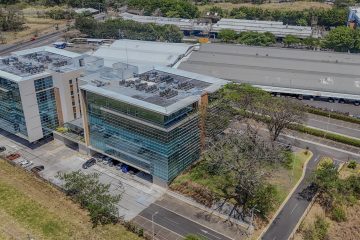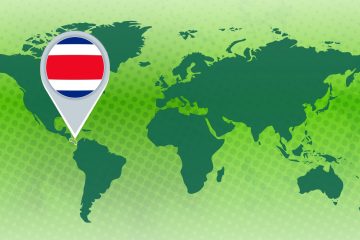By Manuel Tovar Rivera, Minister of Foreign Trade of Costa Rica.
El Financiero – Thirty-five years ago, Costa Rica launched an innovative model that transformed the country’s economic history: the Free Trade Zone Regime (FTZ). What began as a strategy to integrate into the global economy has become one of the most successful public policies, generating investment, quality employment, and development opportunities throughout the country.
The creation of this regime answered a crucial question: how could Costa Rica compete internationally and attract foreign direct investment (FDI)? Three decades later, the answer is clear: we are a global leader in attracting investment, generating employment, and creating productive linkages.
A few weeks ago, the Costa Rican Foreign Trade Promotion Agency (PROCOMER) published the study “Free Trade Zone: 35 Years Building Value for Costa Rica .” The results are overwhelming: in 2024, companies in the Free Trade Zone contributed $2.90 for every dollar exempted , generated 15% of the GDP , accounted for 65% of goods exports , and supported 265,000 direct and indirect jobs , 45% of which are held by women . Furthermore, workers in this regime receive an average salary of $2,319 per month , almost double the national average.
Currently, the RZF is comprised of 626 companies distributed throughout the country , which generate nearly three times as much tax for the treasury as is exempted. The regime is increasingly expanding beyond the Greater Metropolitan Area (GMA), boosting local economies in Orotina, San Carlos, Limón, and other regions. In doing so, we are fulfilling a clear mandate: to bring more opportunities to communities outside the GMA.
The impact is also reflected in productive chains . In 2024, local purchases exceeded $6 billion , benefiting hundreds of national suppliers and stimulating innovation and technological advancement.
The key to success
The success of the RZF rests on two fundamental pillars:
- A stable and continuous State policy , supported by a regulatory framework that provides legal security to investors.
- A solid trade liberalization policy , based on international agreements that are not just on paper, but rather constitute true strategic platforms for multiplying FDI.
CAFTA -DR is a clear example: since its entry into force, companies in free trade zones have more than doubled their presence, employment, and investment. In 2009, before its implementation, investment flows were $335 million, exports $2.405 billion, and the regime generated 52,000 direct jobs. Today, those numbers rise to $3.72 billion in investment, $13.013 billion in exports, and 197,000 direct jobs .
But we haven’t been satisfied with that achievement. Since the beginning of this administration, we’ve understood that the sustainability of this model depends on the diversification of markets and sectors . Therefore, we have strengthened our commercial platform to attract projects in medical devices, semiconductors, and high-tech services , while also expanding and strengthening our geographic reach to Europe, Latin America, Asia, and the Middle East .
Costa Rica’s trade agenda is moving forward dynamically:
- In Latin America, the FTA with Ecuador recently came into force, and we are requesting accession to the Pacific Alliance.
- In the Middle East, we signed an agreement with the United Arab Emirates and negotiated another with Israel.
- In Asia-Pacific, we are making progress toward joining the Trans-Pacific Partnership ( CPTPP) , considered the gold standard for international trade.
The results are evident: in the first half of 2025, exports grew 14% , reaching $11.012 billion , a historic record of more than $2 billion in a single month . Medical devices led the way with a 27% increase , consolidating Costa Rica’s position as a global hub for healthcare innovation.
Furthermore, PROCOMER continues to attract high-value investment projects: in May of this year alone, initiatives worth more than $103 million were confirmed , which will generate 2,300 jobs , many of them in free trade zones.
Looking to the future
The Free Trade Zone Regime has been decisive for our competitiveness, but we cannot be complacent. Thousands of young people still await better opportunities, and our responsibility is to guarantee them a promising future here, in our beloved Costa Rica.
To sustain and scale this model, we must advance strategic reforms that include:
- the approval of exceptional working hours,
- clean and competitive energy,
- modern logistics infrastructure, and
- technical and specialized education.
This is a shared responsibility , in which each sector must play its part, with a flexible institutional framework that responds to the dynamics of global trade.
The Free Trade Zone Regime is much more than a fiscal or trade policy: it is an engine of socioeconomic transformation that has demonstrated its capacity to generate well-being, opportunities, and development. Without this policy, Costa Rica would lose competitiveness and vision for the future. This government’s appreciation and unequivocal commitment is to safeguard it, and it will be.
We have the formula: openness, investment, and talent. Our task now is to strengthen, project, and protect it. Because the achievements of these 35 years are just the starting point toward a more prosperous, innovative, and globally connected Costa Rica.



0 Comments